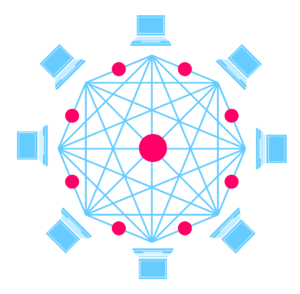 Earlier this month, we hosted a webinar presenting Transparency-One’s latest features, including our blockchain services. Blockchain can help enhance the Transparency-One’s supply chain transparency solution by providing users with additional data security. But how does it work? Here are your top 3 blockchain questions, answered
Earlier this month, we hosted a webinar presenting Transparency-One’s latest features, including our blockchain services. Blockchain can help enhance the Transparency-One’s supply chain transparency solution by providing users with additional data security. But how does it work? Here are your top 3 blockchain questions, answered
1. How is data stored in Transparency-One and in the blockchain qualified?
We know that data is only valuable if it is accurate. The quality of information in Transparency-One, and in the blockchain, is assured in three ways:
First, by declaring their information in the Transparency-One platform, suppliers are sharing data with their customers and, by extension, all the businesses involved in a product’s supply chain. The fact that multiple stakeholders involved in the supply chain will see this declared data, rather than just a single partner, reduces the likelihood that that fraudulent data will be input into the platform in the first place.
In addition, through Transparency-One’s partnership with SGS, the world’s leading inspection, verification, testing and certification company, we can validate the quality of supply chain data entered into the platform. SGS verifies the declared information both via integration with SGS databases and the supplier onboarding team. Any declared supplier certifications not yet validated by SGS, including those provided by other certification bodies, can be verified by an SGS team, then tagged. Once data is verified and tagged, it can no longer be changed by the supplier.
Finally, all data added to the blockchain is immutable and cannot be changed or deleted. Given the knowledge that any data declared in the Transparency-One platform can be pushed to the blockchain and permanently recorded, businesses along the entire supply chain have a greater incentive to provide accurate and truthful data.
2. What if data in the blockchain needs to be updated? Who manages this, and how does this affect previously stored information?
Let’s say, for example, that a supplier’s facility has begun to produce packaging, in addition to its other activities. To update this in Transparency-One, the supplier simply logs in to the platform and updates the details as needed. This change is reflected in the new activities associated with their facility.
Now let’s say that this same supplier chooses to push this updated data to the blockchain. In the blockchain, the changes made to their facility’s activities appear as an entirely new transaction, even though they apply to a previously existing facility. In this way, blockchain provides traceability—previously stored information is never altered, but rather, modifications are reflected as completely new additions to the blockchain.
3. How is data kept secure in Transparency-One, and how does the blockchain provide more enhanced security?
The Transparency-One platform’s data center is deployed on Microsoft Cloud (Azure), one of the safest platforms in existence today. Microsoft Cloud (Azure) is protected at the physical, network, host, application, and data layers so that Microsoft online services are resilient to attack. In addition, Transparency-One’s collaboration with Microsoft ensures that we have implemented best of breed practices on Azure Cloud, to keep your data safe.
Blockchain enhances the security of data stored in Transparency-One by providing a complete record of all supply chain interactions between partners. If any data is added, deleted, or changed, each transaction is recorded separately in the blockchain. In this way, information cannot be hidden.
Blockchain is an emerging technology whose value for the supply chain is clear. By recording all interactions between supply chain partners, blockchain helps pave the way for a more transparent and traceable value chain.
You can access complimentary recording of our webinar on the Transparency-One’s features, including blockchain, by clicking here.










